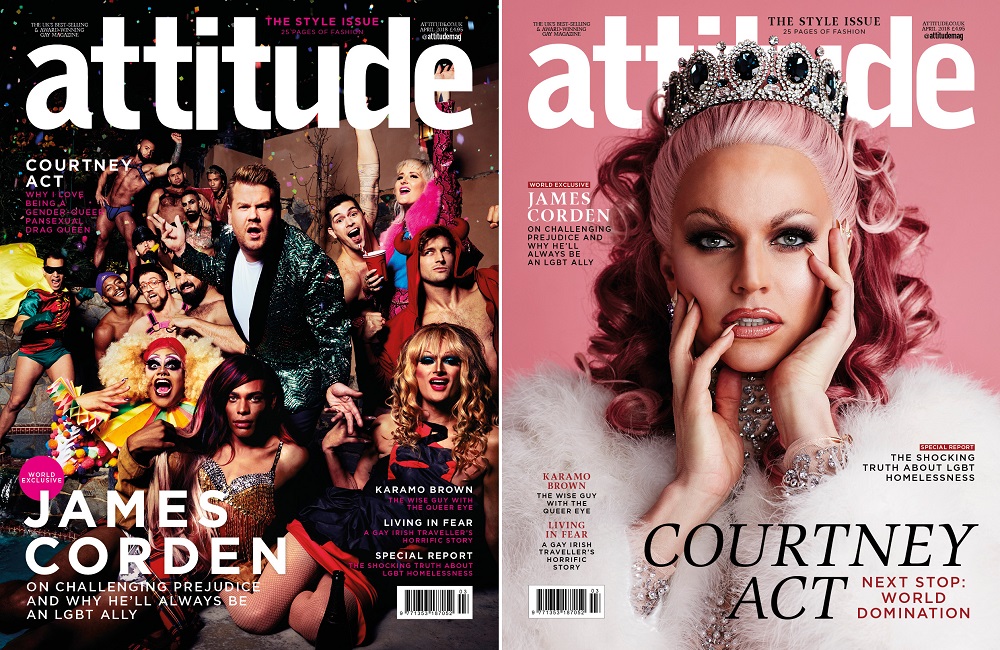This converted London bus is giving homeless LGBT people a place to sleep at night
Attitude meets Carla Ecola, Director of the LGBT+ homelessness service The Outside Project
By Will Stroude
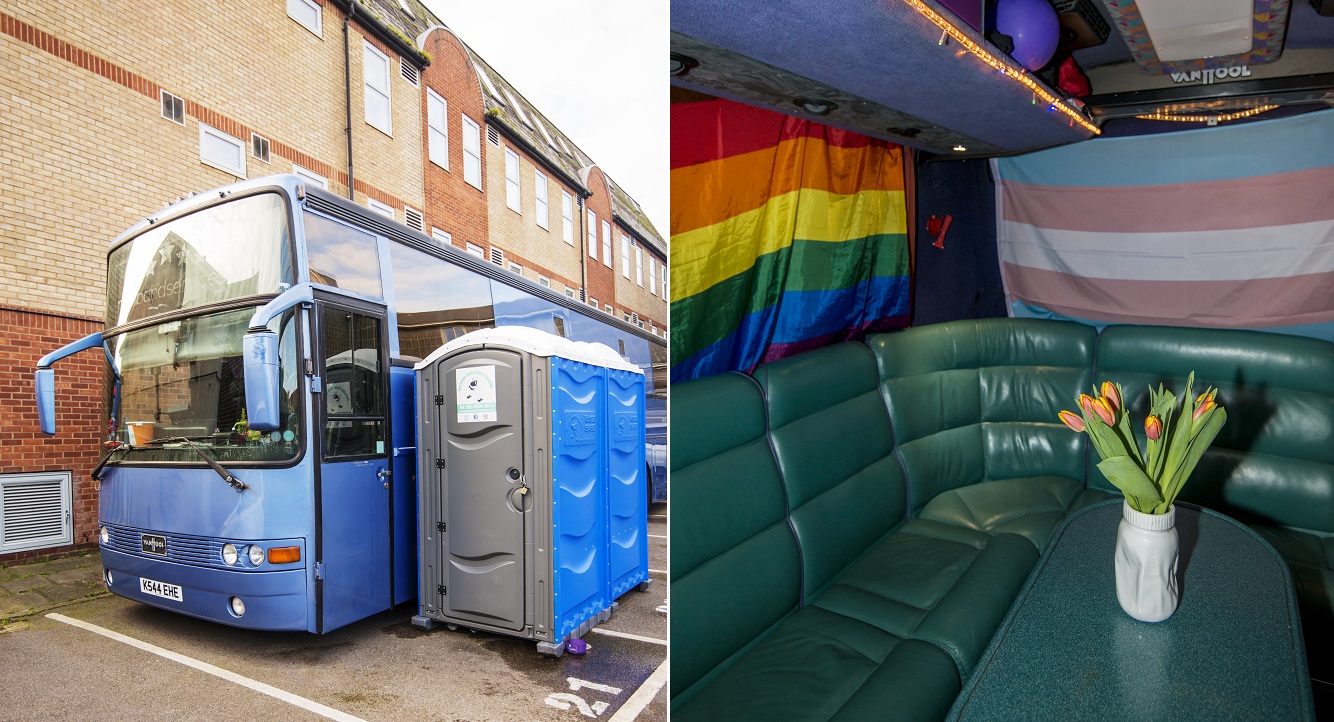
(Photography: Markus Bideux)
As we investigate the UK’s shocking rates of LGBT+ homelessness in our new April Style issue – available to download and in shops now – we meet Carla Ecola, the Director of the Outside Project, a temporary shelter for homeless people who identify as LGBT+.
Carla, 32, set up the Outside Project last year. It’s housed in on an old tour bus that’s stationed in the car park of a community centre at a location on the outskirts of London that has to remain secret for the safety of its users, many of whom have been rejected by their families because of their sexuality or gender identity.
Our Editor-in-Chief Matt Cain spent a night at the shelter in January and spoke to Carla about the need for homelessness services specifically for LGBT+ people.
Why did you want to set up a shelter specifically for LGBT+ homeless people?
I’d worked in the sector for several years and along the way I came across queer people but they would be very closed a lot of the time. In the day centre for example, people would walk through the door and see me – and I’m quite visibly and openly queer, I identify as queer – and people would come out to me but secretly. And when I worked in outreach services I found that people were less likely to come out when they’re actually on the street and not connected to services.
Where does this reticence come from?
If you’re homeless or in some kind of crisis, the last thing that you need to deal with is homophobia or transphobia or biphobia. So people just go back into the closet. They don’t want any extra problems. If you walk into a day centre full of people that you don’t know, there is that kind of fear, that you’re not walking into a safe space for your sexuality or gender identity. These people might have been bullied at school, they might have been bullied at work, they might have been kicked out of home. I haven’t met a single queer person that doesn’t have an experience of that – and that is the first thing that anyone thinks of when they’re in crisis and they’re accessing services. They want to avoid that because they just want to survive. That’s why people go into stealth mode.
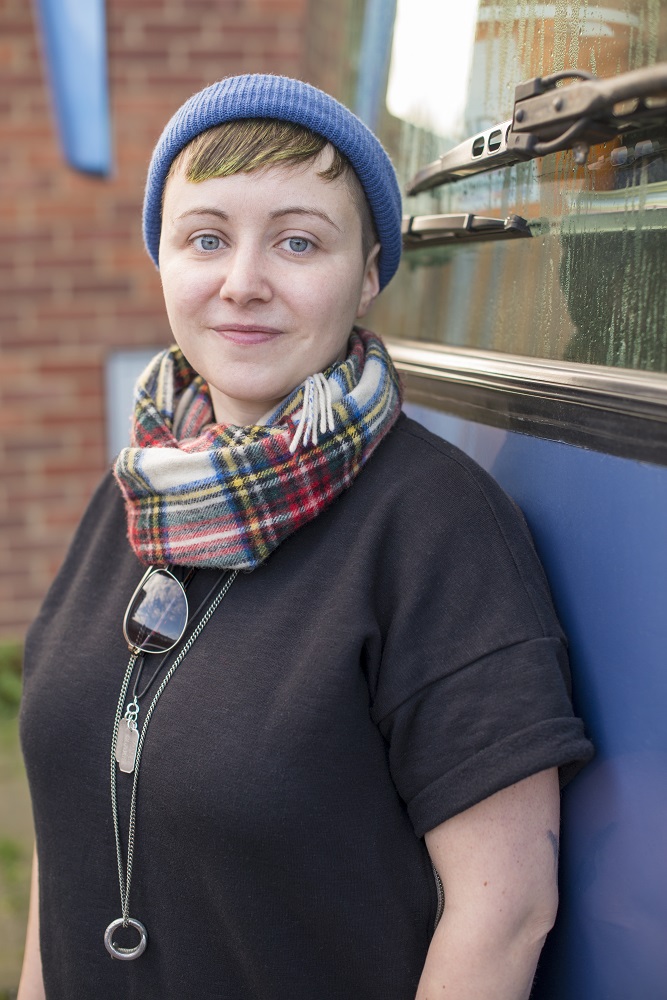
Did you ever witness or experience homophobia when you were working in mainstream homelessness services?
I encountered homophobia all the time. The things people used to say, people being overly sexual towards queer people as well, asking inappropriate and invasive questions that you don’t want to answer when you’re just trying to get a cup of coffee. And here at the Outside Project, we’ve had quite a few guests that have left winter shelters because of transphobia and homophobia and biphobia. They have had a hard time, going from being on the street into a shelter and then feeling really threatened or being physically abused within their shelters and needing to come here.
So what’s the atmosphere like in mainstream homeless hostels and shelters?
It’s a very male-dominated sector. The visibly homeless people are generally cis men, I think because it’s just so dangerous on the street to be rough sleeping if you’re female or you’re queer. And if you’re trans it’s a really dangerous place for you to be. So, like women, LGBT+ people often make up the hidden homeless. We’re not going to be in a doorway. That’s my experience when I came to London, when I was young and queer and running around like a mad one, bouncing around in squats and sleeping on buses and all that sort of stuff. I didn’t consider myself to be homeless and I think that’s the biggest problem amongst our community.
How would you respond to people who say hidden homelessness isn’t as much of a problem as rough sleeping?
The fact that LGBT+ people often don’t sleep on the streets makes us homeless for longer because we’re not being seen by any services. If you’re staying with friends or you’re staying in squats, you’re in this half-way between having stable accommodation and getting on with your life, and being completely rock bottom in a doorway, when an outreach worker’s going to pick you up and refer you to something like No Second Night Out. So you’re not getting help.
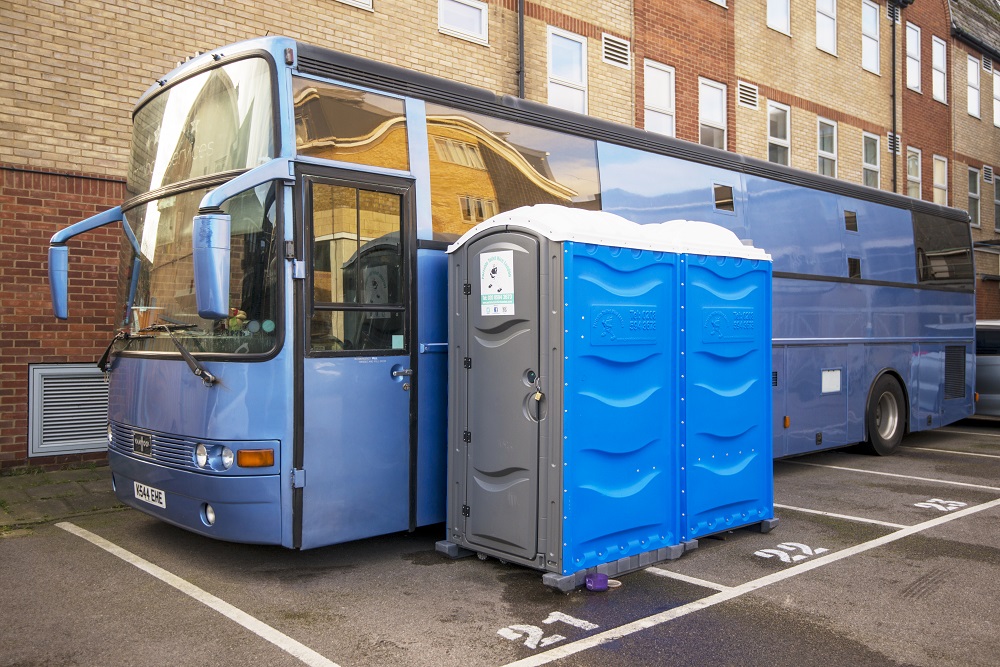
And all these things inspired you to set up the Outside Project…
Yeah, I got together people in the sector that I’d worked with over the years and I asked different charities who’d be able to advise us how to go about it in the best way. We sat down and met with them last February and asked why hasn’t this been done before? And no-one really could have an answer for it. So I thought, ‘Right, let’s press on then.’
How exactly did you press on?
I tried to pull data to demonstrate that it was a needed thing but what I actually discovered was that there wasn’t much data, that people didn’t ask about people’s sexuality or gender identity. If they did, the largest answer was ‘Prefer not to say’, and then it was just left alone. Pulling the data, I could demonstrate the need for the project on that basis – that there is no data. This is not something that the sector’s picking up on but we know as a community that it’s an issue.
Many people in the UK think homophobia is now largely a foreign problem; what proportion of your guests are from non-British cultures?
I would say more than half of our guests, three-quarters of our guests at least have been from the UK, UK residents. I think there’s definitely been an over-representation in the shelter of people of colour, which we expected. We expected there to be more trans women and more people of colour, and that’s exactly what we’ve got. They’re the two groups that have needed our shelter most.
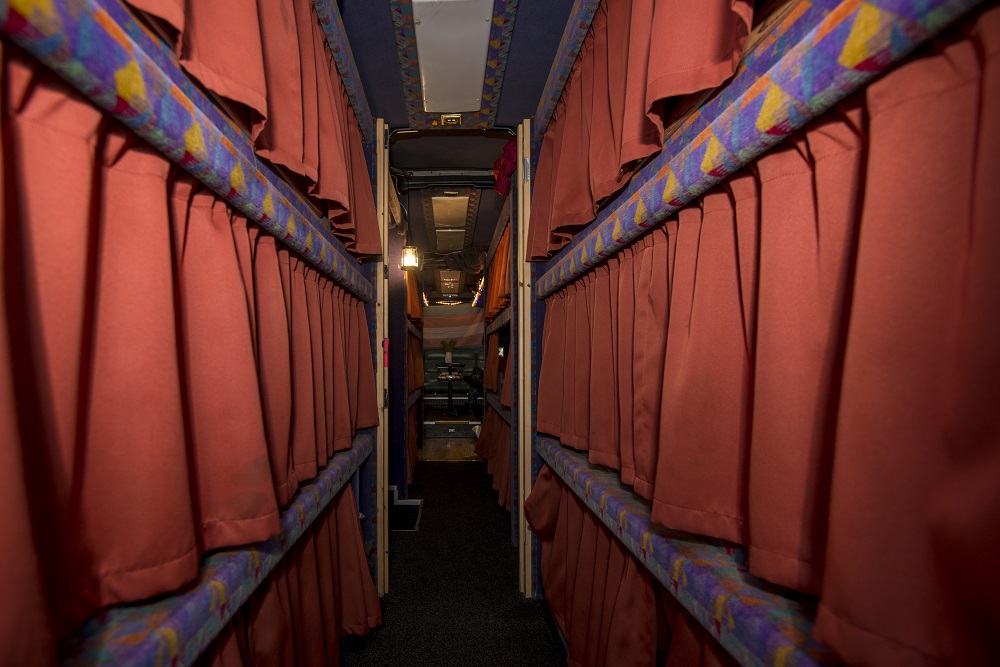
One of your rules is that no drugs or alcohol are allowed in the service at all.
Yes but if you’re involved in chemsex or you have different addiction issues we’ll just have a conversation with the case worker or the referring agency. How do these people use? Is it dangerous? Are they able to manage their addiction in this space? Because I’ve worked with a lot of people with addiction issues and I knew that they’d be fine in a winter shelter, they’d be better off, they’d reduce their use. We’ve got a guest at the moment who’s drinking fifteen cans a day. He came into the shelter and he’s a bit shaky, but he’s fine and he’s reduced his alcohol use and doesn’t need to drink during the night. He comes here and he sleeps and he’s safe. But he’s not an issue to anybody; he’s a functioning alcoholic. There’s no point in us running a shelter for our community and saying, it has to be people with low support needs. We know that our community has multiple and complex needs. We’re more likely to experience substance abuse and alcohol abuse and have different mental health issues. If we were to say, ‘low support needs only’, it would just be pointless.
You also have a rule that guests aren’t allowed to pry into other people’s experiences or ask, ‘Why are you here?’
Yes, that’s because someone could be escaping a violent relationship or have been kicked out by their family. They probably have to answer that question all day long in different services as they’re trying to get help. When they come here it’s just a safe space for them to relax, get an evening meal, play some games, get some sleep. It just triggers people emotionally and then the person sat next to them will say, ‘I experienced that too’ and then before you know it you’ll go round the lounge and everyone will be really sad. And they’ll have to talk about all this the next day with their case workers.
I’ve seen you also have several books and films about LGBT+ culture and history. What’s the thinking behind this? Do you want to make people proud of their sexuality or gender identity if they might have been feeling the opposite?
Yeah definitely. It’s why we’ve got the flags up, the rainbow fairy lights. The trans flag is in prime position when you walk onto the bus, the bi flag too. But I must say that not all of our guests are homeless because they’ve come out; domestic violence, unemployment, poverty are all factors. This is a life-long prejudice. Yes, there is that sharp prejudice when you first come out but there’s also prejudice throughout your life that can result in you being homeless – that you’re much more likely to experience than your cisgendered or heterosexual peers. That’s not something that’s reported as much as well – people losing their jobs because they’re transitioning for example.
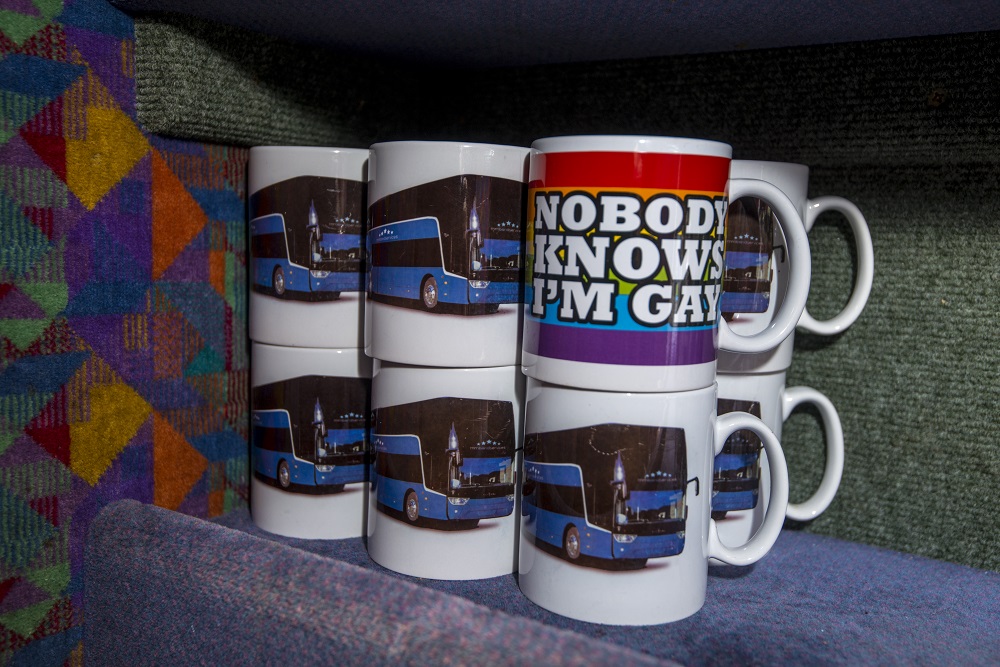
You mention that you have a lot of trans women here and that their experience can be particularly tough. Is this because homelessness often interrupts their transition and they can’t access hormones or even female clothes and make-up and therefore can’t pass as cis-gendered?
Homelessness stops their transition because they can’t link into the services that they need. And because of their homelessness, when they have gone to certain services, those services have not really understood the Equalities Act, not been trained properly and sometimes questioned whether they can access a female space. Even though they identify as female and present as female. It’s almost like workers feel like they need to pass to access that space rather than identify. You wouldn’t see any of our women here as anything but women but that’s not their experience in some of the homelessness services that they’ve approached.
The Outside Project is a temporary initiative at the moment but what’s the plan for the future?
At the moment it’s a pilot project. The idea was to set up a shelter and run a pilot for six weeks. But because of the amount of support that we got, funding and the volunteers and everyone being supportive, we opened for ten. After this it’s similar to other winter shelters; it’s about moving people into the right spaces. We’ve demonstrated that there’s a need for it – most of the time we’ve been full. So the plan is that we’ll carry on, now that we’ve done the pilot. We’ve demonstrated that we need this as a year-round thing, we just need a permanent venue now.
Read our full invesitgation into the UK’s LGBT+ youth homelessness crisis in Attitude’s April Style issue. Buy in print, subscribe or download.
